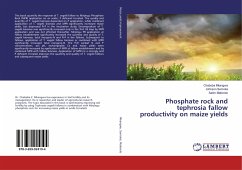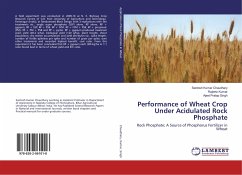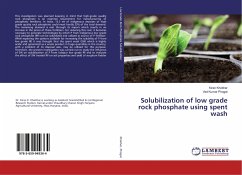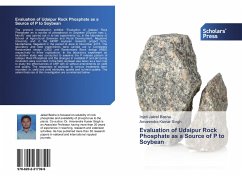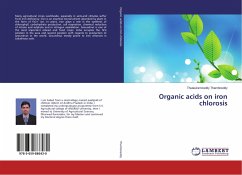
Phosphate rock in Agriculture
Studies on some factors affecting the solubility of rock phosphate in some soils in Egypt
Versandkostenfrei!
Versandfertig in 6-10 Tagen
29,99 €
inkl. MwSt.

PAYBACK Punkte
15 °P sammeln!
Partial acidification through organic acids has the potential to increase the release of phosphorus from rock phosphates, especially oxalic acid due to the acidic effect and chelating interactions with the metal associated with phosphorus, which results in the available form of phosphorus and other nutrients for plant nutrients uptake. Combination with oxalic acid plus ammonium thiosulfate and mixing them with rock phosphate has an effective effect on increasing the yield parameters of both soybean and maize plants. The use of oxalic acid and ammonium thiosulfate represents many unique feature...
Partial acidification through organic acids has the potential to increase the release of phosphorus from rock phosphates, especially oxalic acid due to the acidic effect and chelating interactions with the metal associated with phosphorus, which results in the available form of phosphorus and other nutrients for plant nutrients uptake. Combination with oxalic acid plus ammonium thiosulfate and mixing them with rock phosphate has an effective effect on increasing the yield parameters of both soybean and maize plants. The use of oxalic acid and ammonium thiosulfate represents many unique features such as ease of addition and increase in crop yield, which compensates or even exceeds the increase in costs.





